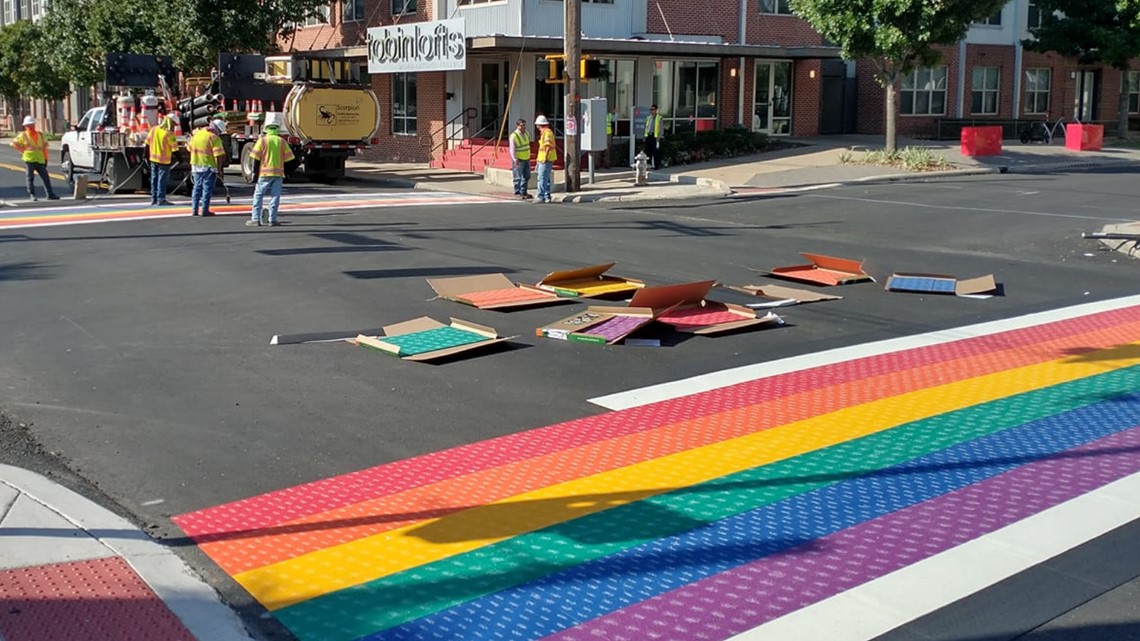The governor said his idea is to keep Texans moving safely and free from political and ideological messages being a distraction on the road.
SAN ANTONIO — Governor Greg Abbott is pushing to clear signs of identity on Texas roads, calling it an effort to remove political ideology in his directive issued to the Texas Department of Transportation (TxDOT).
In San Antonio, it could mean the removal of a rainbow-colored symbol of inclusion and visibility in the heart of the city’s Pride Cultural Heritage District, established just this summer.
The governor said the move is about safety, keeping roadways free from what he called “distractions.” But for LGBTQ+ leaders and city officials, the order feels more like an attack on identity and visibility. TXDOT’s executive director echoed the governor, saying non-compliant installations like the rainbow crosswalk at North Main Avenue must be corrected within 30 days.
If they aren’t, state or federal funding could be withheld from cities and local TxDOT agreements suspended.
Meanwhile in the Pride Cultural Heritage District, some feel this isn’t about safety. The rainbow crosswalk along North Main Avenue was installed in 2018. San Antonio dedicated the area as an official district during Pride Month in June.
“It’s completely in the name of politics,” said Pride San Antonio Secretary James Poindexter. “In the name of trying to eradicate and erase the history, culture and the existence of the LGBT community in any city in Texas.”
Poindexter stressed he’s ready for potential legal battles if it means preserving the rainbow crosswalk and pride cultural heritage district
“It’s very disappointing that something that is harmless, that is meant to unify a city community is being used to just further divide people,” said John Barker, Pride district business owner.


The discussion spilled over into Thursday’s City Council meeting.
“We cannot erase who we are and the contributions that we make in our community,” said Maria Salazar, chair of the city’s LGBTQ+ Advisory Board, at the A-session meeting of council.
Salazar added that the community plans to continue advocating for visibility despite mounting pressure from the state.
Mayor Gina Ortiz Jones released a statement after meeting with the city attorney and city manager, saying officials are awaiting more information from TxDOT before taking further steps.
“As mayor, I remain committed to balancing our community’s transportation needs with ensuring everyone in our community feels safe, welcomed and supported,” Jones said.
A resolution in support of the crosswalk had already been drafted before the governor’s directive, in the aftermath of Florida state leaders removing a similar rainbow crosswalk that had been installed in honor of the victims of the 2016 Pulse Nightclub shooting, which the drafted resolution calls “an act widely perceived as diminishing the dignity and visibility of the LGBTQIA+ community.”
That drafted resolution explicitly seeks to “preserve and protect” the city’s cultural corridors, “including the rainbow crosswalks at the intersection of North Main Avenue and East Evergreen Street, as vital elements of the Pride Cultural Heritage District.”
It’s unclear at this point when the resolution might be considered by City Council.
“We had been under the assumption that because the crosswalk was on city roadway, TxDOT would not be able to come in and paint over it,” said Councilwoman Sukh Kaur of District 1, where the crosswalks are located.
Jones acknowledged the challenge ahead, but remained optimistic.
“We don’t need (the crosswalk,” the mayor said at Thursday’s council meeting. “They’re nice to have, but that pride rolls on.”
City leaders are now exploring alternative ways to support and express inclusivity in District 1, even as they brace for what could become a legal and political fight over the right to display LGBTQ+ symbols in public spaces.
